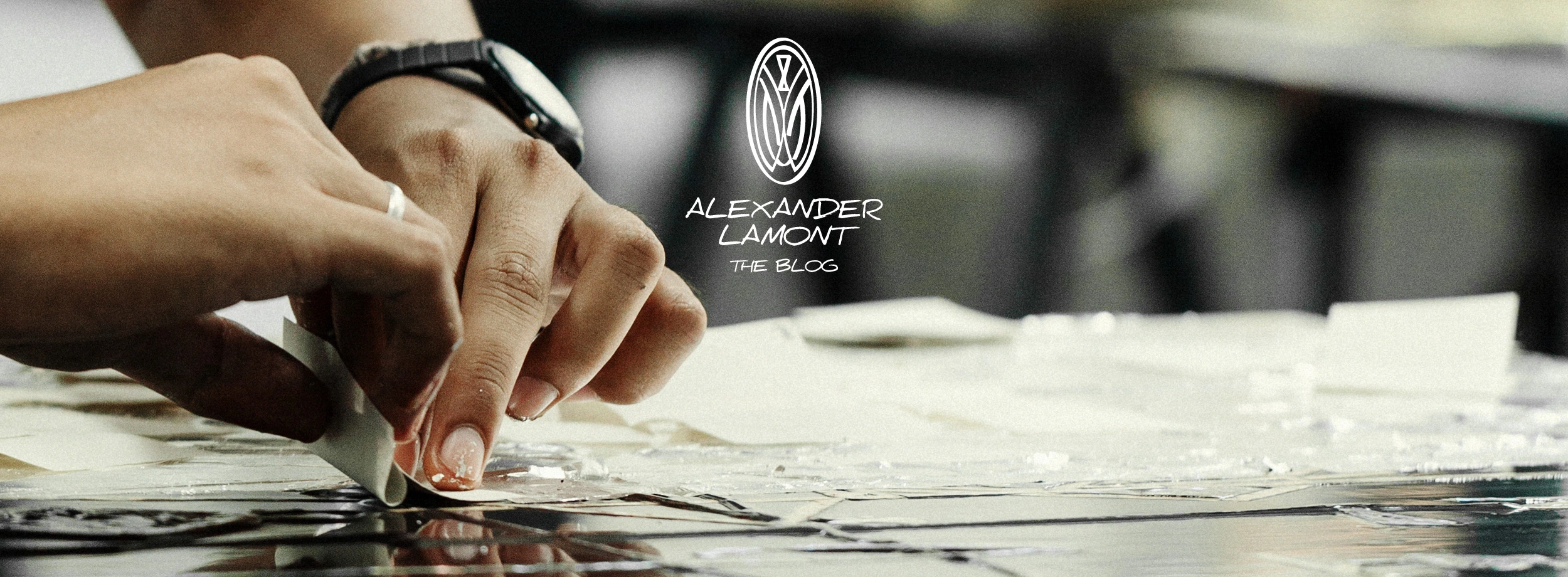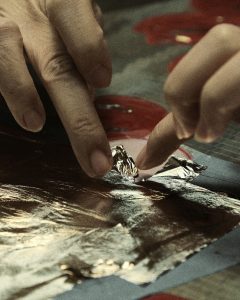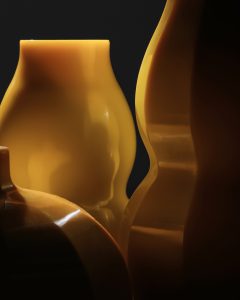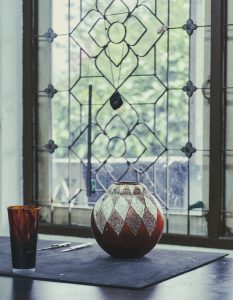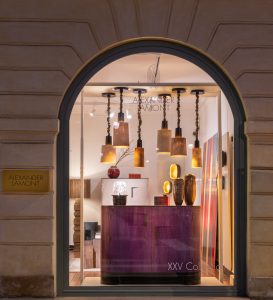I have been working with shagreen for 14 years now but the questions and answers technically and design-wise remain constant. The material is generally imagined as in its iconic appearance defined during the great decorative period of the early 20th century whereby skins are applied in a regular grid of rectangles with the centre ‘bead’ of each skin at centre. Last year I spent some time breaking up this regularity with some different approaches to linearity and pattern.
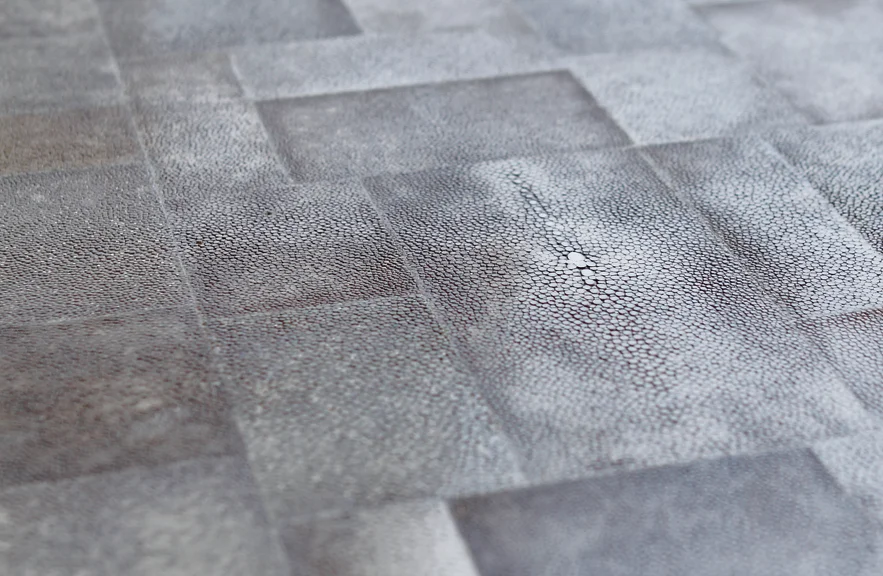
Tourbillion Pavé Shagreen Table, Spring 2015 collection
The aim was to lighten and contemporize the wonderful texture of shagreen. By using skins without their central bead the material loses its ‘classic’ nature but retains the gorgeous texture of enamel and chocolate. There is also a wonderful effect created by sanding that finds lighter and darker areas (more or less natural enamel) in each section.
Both the Pavé and Parallel Line shagreen patterns are brought beautifully to life when applied to the Tourbillon Table. The surface of the shagreen appears to pour over the table’s rounded edges like river water pouring over a waterfall.
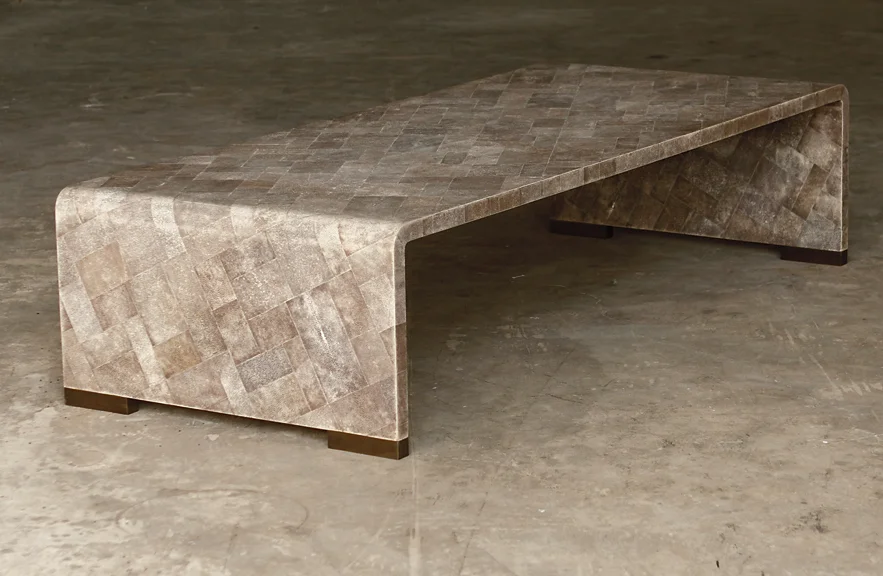
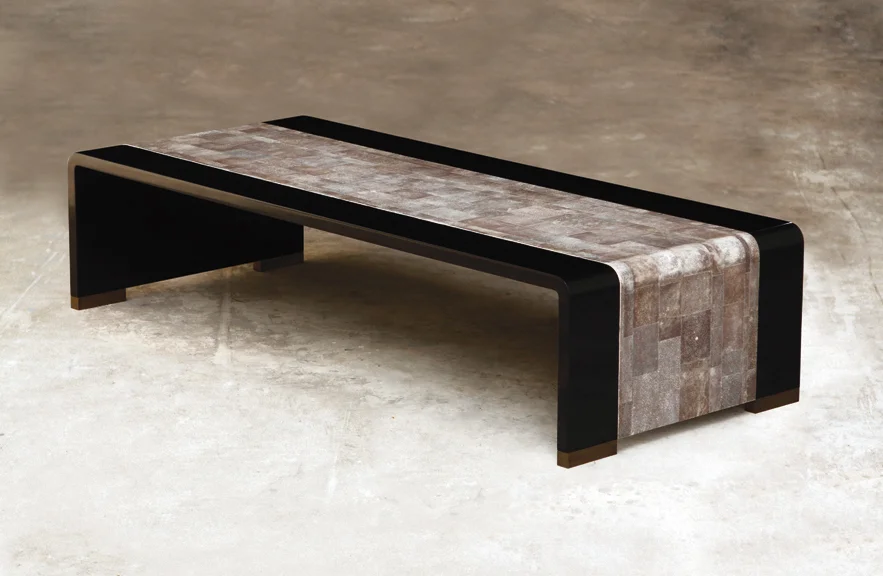
Shoulders in black natural lacquer run alongside the shagreen in the Parallel Lines Tourbillon Table, raised on bronze feet.
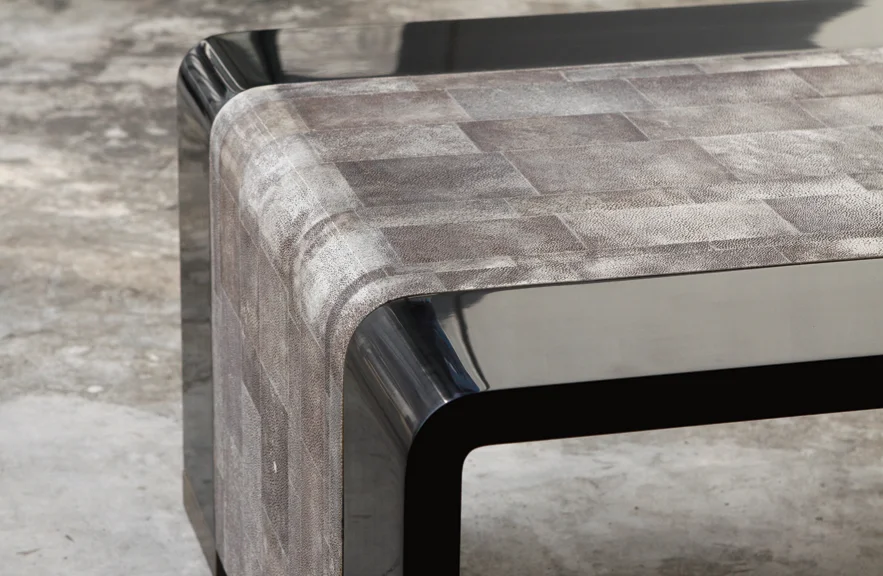
The Tourbillon table is a modern take on this classic waterfall structure. The sides are covered with natural lacquer that meets with bronze feet bringing elements of detail and material together. Sanding the shagreen in different ways enhances the nature of each individual skin.
Having spent so many years working with these materials I find that ideas emerge from the process itself – an authentic design experience that is unique to those who go deeply into the craft and traditions of the materials that make the pieces. Finding new ways to articulate the materials is at the heart of our designs.
